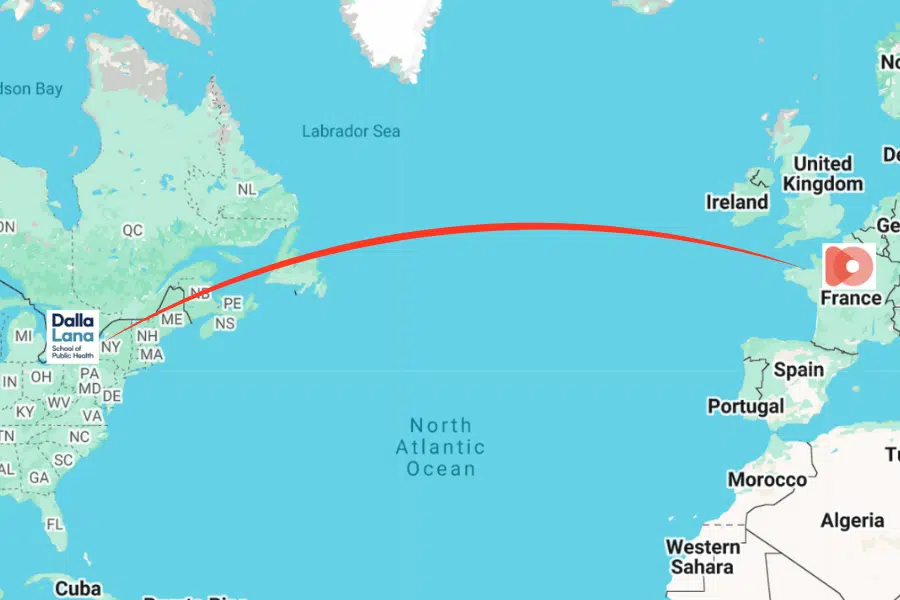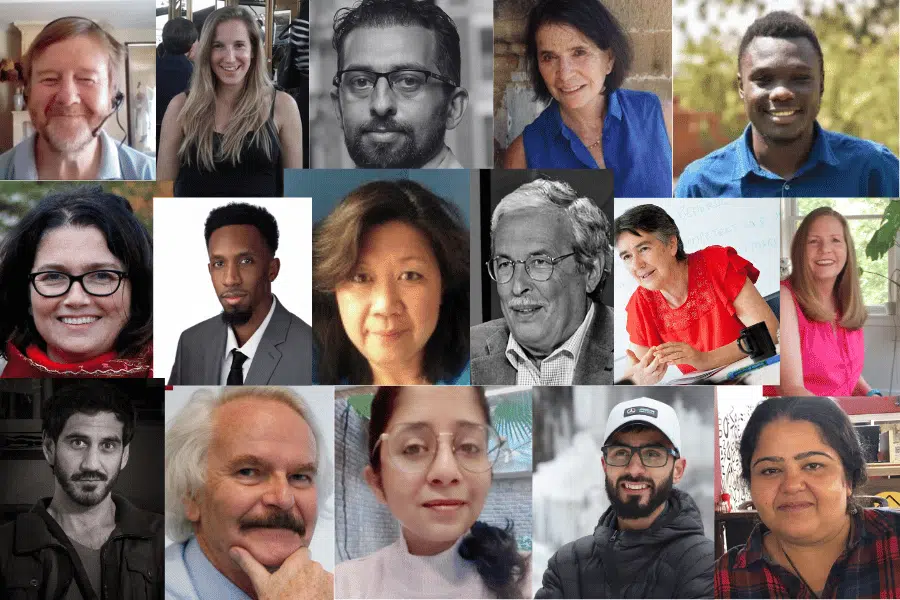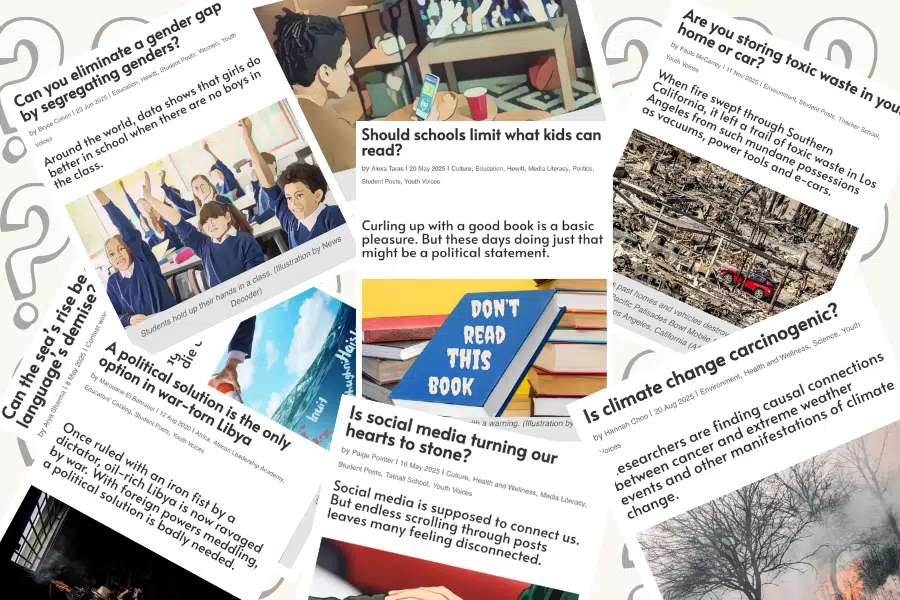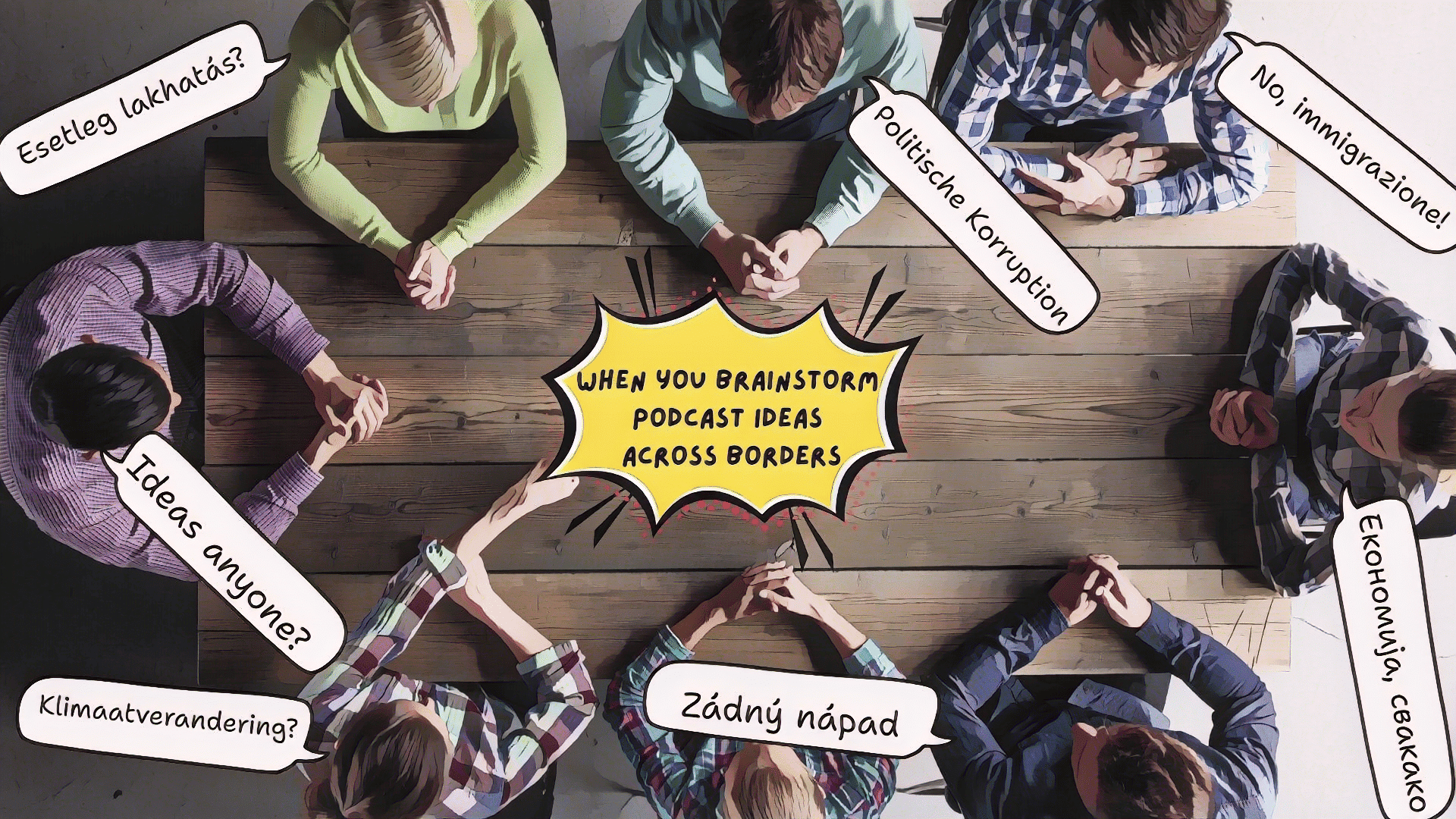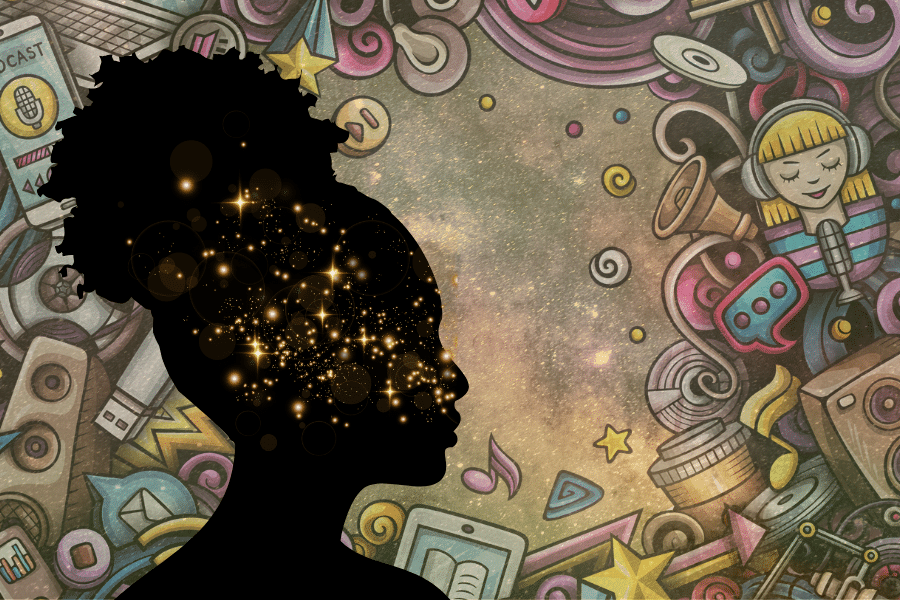Imagine adding your thoughts to a conversation, only to have them dismissed by the group — and not because of what you said, but because they thought you were too young to know what you are talking about or understand the topic at hand.
That’s what teens around the world face when they try to participate in “adult” conversations.
On Tuesday 2 December, we gathered seven people from six countries in a live virtual roundtable to discuss whether and how young people are able to speak out and be heard. Five teens from News Decoder partners schools in India, South Africa and the United States were joined by News Decoder correspondent Alfonso Silva-Santisteban from Peru and Marouane El Bahraoui, a research intern at the Carter Center in the United States and African Leadership Academy alum originally from Morocco.
When we asked each of the teens whether they felt they were listened to, they all agreed on one thing: When talking to their peers they felt understood and respected. But when trying to get their opinions across in a room of adults, they were often dismissed and felt disrected.
“If I’m talking about a certain topic to my peers and they already have that knowledge already, they already know what I’m talking about, then it’s much easier for them to actually hear me and understand me,” said Ramona-Blessing Mkunna, a Tanzanian student studying at the African Leadership Academy in South Africa.
Some voices are valued more.
Sophie De Lavandeyra, a student at The Hewitt School in New York City said that she feels that even when she speaks to teachers or family members, she is heard and listened to but not equally valued. “And ultimately, there’s this sense of ‘I’m a student, I’m a child’, so therefore my opinions must be not as valued as other adults in my community,” she said.
Sydney also attends Hewitt and said that the problem of being heard is more pronounced for girls. “I think people can undermine our opinions or statements and beliefs that we have,” she said.
Mahee Mantri, a student at VIBGYOR High in India said that she feels that people look at age and not experience, and that while her experiences might be different, they should still be considered valid. It seems, she said, that the age difference gives some people an excuse to not listen.
That young people feel they aren’t heard may be the one unifying aspect of what we call the “Gen Z” generation — the first generation to be born in a fully-digital world.
El Bahraoui said that if there is a Gen Z movement, it is one that doesn’t have a leader and it doesn’t have a specific set of demands, but the demands they do have seem to cross borders: lowering unemployment, ending nepotism and corruption, slowing down climate change.
“Young people are afraid of the uncertain future or the uncertainty of the future. That’s why there is all this anger and people going out to the street and protesting because people want some stability some certainty,” he said.
From anger to action
In many places, like Kenya, to get heard youth are taking to the streets in protests and when they do, it has produced results, El Bahraoui said. “Some protests led to the dissolution of the house of representatives,” he said. “Some protests led to the ousting of the president or the head of state. Other protests led only to the government removing a financial bill, such as the case in Kenya. There was a tax bill and then Gen Z protests went to the streets and the government just removed that bill, instead of removing the whole government or the whole parliament.”
Silva-Santisteban said some of the frustrations young people have is that even when protests produce change, often those changes aren’t long-lasting or significant.
“There’s an outburst of outrage and young people are called to be responsible of the change. Like they’re the spearheads of the protest. And at some point they become responsible of the change, but then the conditions are the same, especially in a country [like] Peru where you have a political crisis, a lot of conditions for unemployment.”
Meanwhile, the young people that took to the streets face violence and are stigmatized, he said.
The young people in the roundtable seemed to agree that shouting demands might not be the most effective way to get heard. Instead it comes down to an ongoing process of talking to people you might not agree with, and more important listening respectfully to what they have to say.
Dialogue is needed.
Anna Bamugye, a Ugandan student at the African Leadership Academy, said that you can’t force your opinions on people. “It’s about understanding each other and where you’re coming from,” she said. “And most of the time, we find comfort in talking to those who understand what we’re trying to convey, what the message we’re trying to say.”
But in order to get a message to people, you must talk to people who may not understand you. “You have to talk to people who have different views,” she said. “To hear where other people are coming from allows you to understand, and maybe just help understand how you can shift that person’s perspective and understand where both parties are coming from.”
In this way too, she said, you could learn something from them that you had never thought of.
Mkunna said that If the goal is to raise awareness, you have to consider the most effective way of doing that. She has cousins who were born with autism and has found that in Tanzania people are largely ignorant about autism. As a result, autistic people face discrimination. She decided to launch a social media campaign to educate people about autism. “I think it really helped,” she said. “Because we got a chance to go on national TV and we went on radio and we talked about autism.”
In New York, Del Cid and De Lavandeyra found themselves angry about the immigration raids taking place in New York and all over the country. Del Cid channeled her anger into photography. “So I personally use my art and the images that I take to kind of convey a story and a narrative,” she said.
De Lavandeyra wrote an AI program using a large language model, that lets people who speak little English get questions answered. The program allows them “to be able to chat in whatever language is their home language, and be able to ask questions and get their legal answers based off [U.S. Citizenship and Immigration Services] data,” she said. “But written in a way where they could understand, and it was not just a bunch of legal jargon that felt unintelligible for them and something they weren’t being able to process.”
Mantri said that it is important to both listen and speak up. “I feel there is a generation gap which I experienced in my parents or their generation, and in my generation we question why — why is it things are like that?” she said. “I always like to question why is it like this and they probably just hear it and consider it as back answering or disrespect.”
Questions to consider:
1. What is the difference between being heard and having someone listen to what you say?
2. Why is the ability to listen to what people say important if you want to get your opinions across?
3. In what ways do you try to get your voice heard?



